Last Updated on 18.12.2024 by hrushetskyy
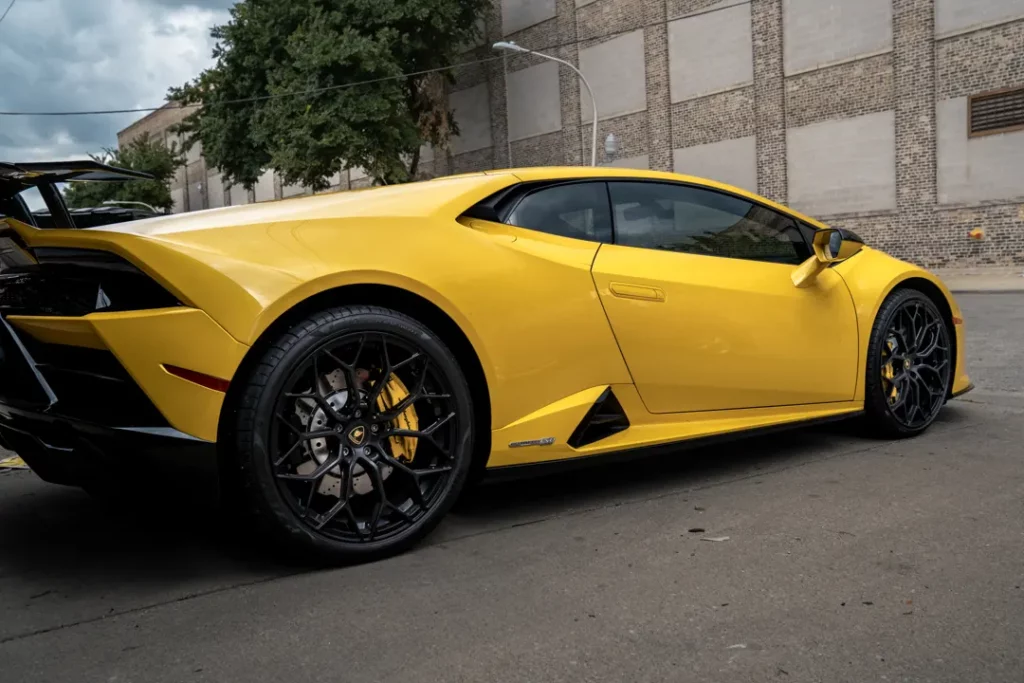
Low-Profile Tires: The 2025 Hottest Upgrade Your Car Deserves?
Low-profiles have lower aspect ratios (a ratio of a tire’s width to height) than regular tires. They have a sleek, sporty look but also improve handling, braking, and cornering—essential for performance driving. A larger contact patch provides better grip on dry, paved roads, and with larger rims and brakes, stopping power improves. The ride is rather rough, though, because less shock from bumps is absorbed. However, many drivers today change for low-profile tires—should you join them? Let’s ask our expert.
How are low-profile tires different from regular tires?
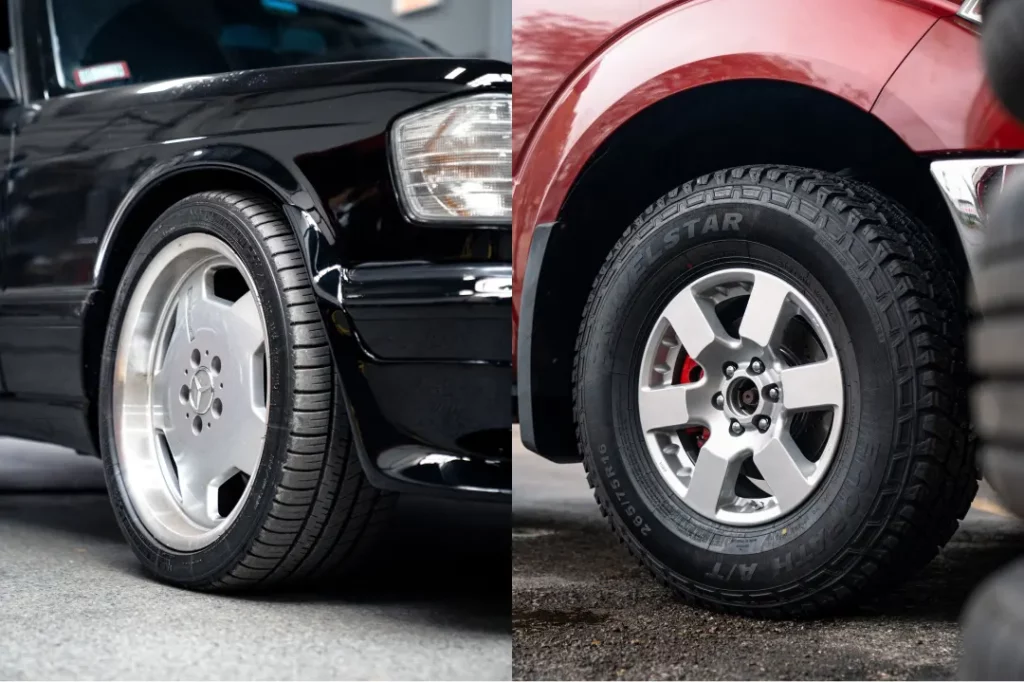
Low-pro tires have relatively low aspect ratios, usually 50% or less. You can find the aspect ratio on the tire’s sidewall at the beginning of the tire code, right after the width. For example, in the code 225/50, the two digits after the slash (50) indicate the aspect ratio. This means the tire’s height is 50% of its width. So, the height of a 225/55 tire is 50% of 225 mm—about 112 mm. Let’s see how this characteristic affects the tire’s performance compared to regular tires.
Better looks
The “more rims, less rubber” trend has been popular for decades. Initially, fitting larger rims with low-profile tires was mainly a passion for car enthusiasts. Today, however, even mid-range car owners seek lower aspect ratios, giving their vehicles a sportier, “cool” look.
To meet this demand, most car manufacturers now include low-profile tires in their Original Equipment (OE) options. Specifications for these tires can be found in the owner’s manual, helping drivers enhance their car’s appearance without risking compatibility issues.
Improved performance
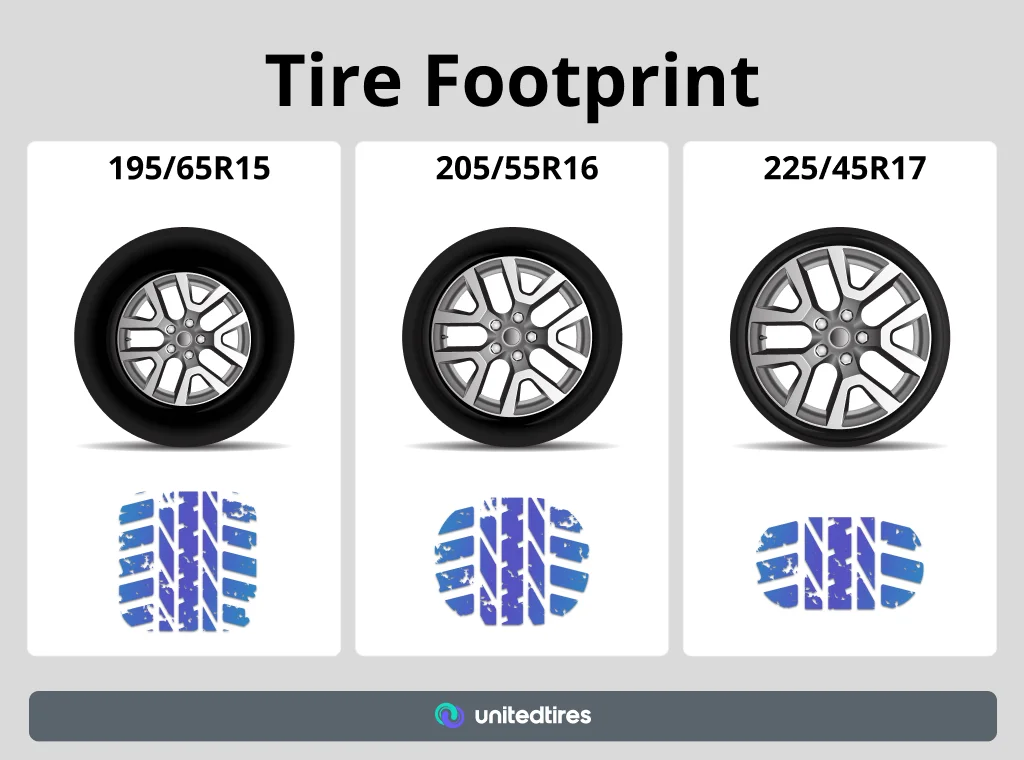
A wider contact patch and stiffer sidewalls give low-profile tires improved handling and resistance to lateral and cornering forces. This is especially noticeable at higher speeds, where quick response is a top priority for the driver (which is why these tires often have higher speed ratings). At non-sport cars, low-pros perform best when paired with an adapted suspension system and larger rims.
Performance characteristics
- Better grip: Low-pros have wider tread patch that improve tire traction on dry, smooth surfaces, which improves steering. Directional tires will also provide good grip in rainy weather.
- Improved cornering: Stiff, short sidewalls flex less, sharpening the wheel response and making cornering on smooth roads faster and more efficient.
- Responsive braking: Low-pro tires often require larger rims, which also allows the installation of bigger brakes. This may drastically reduce braking distance, which is important at high speeds.
Improved run-flat technologies
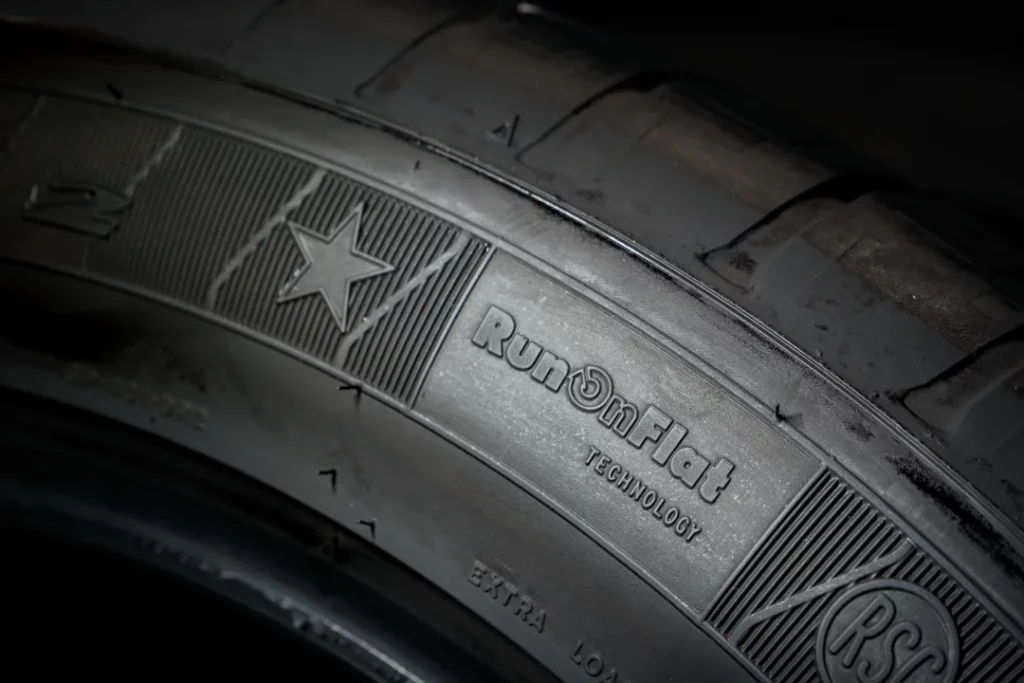
Run-flat technology allows safe driving even if the tire is punctured. Since low-profile tires are more prone to sidewall and carcass damage, they are often enhanced with this technology for safety reasons. This reinforcement in the shoulders and sidewalls allows the tire to continue rolling safely for at least 50 miles, giving the driver time to reach a tire shop. Not all low-profile tires have run-flat technology, but this feature is typical.
More fuel efficiency
Low-profile tires offer lower rolling resistance thanks to their shorter, stiffer sidewalls, simplified tread design, and wider tread. Lower rolling resistance means better fuel efficiency.
Tires account for around 5-10% of fuel use at low speeds and up to 15% at high speeds, so choosing low-profile tires with larger alloy rims can save you money.
The type of tires and wheels you choose can significantly impact fuel economy. Complex tread designs can contribute up to 30% of rolling resistance, meaning all-terrain tires with deep grooves use more fuel than performance tires. Of course, the best choice depends on your vehicle’s purpose, but if you mainly drive on streets and highways, low-profile tires may be a great option.
Cons of low-profile tires
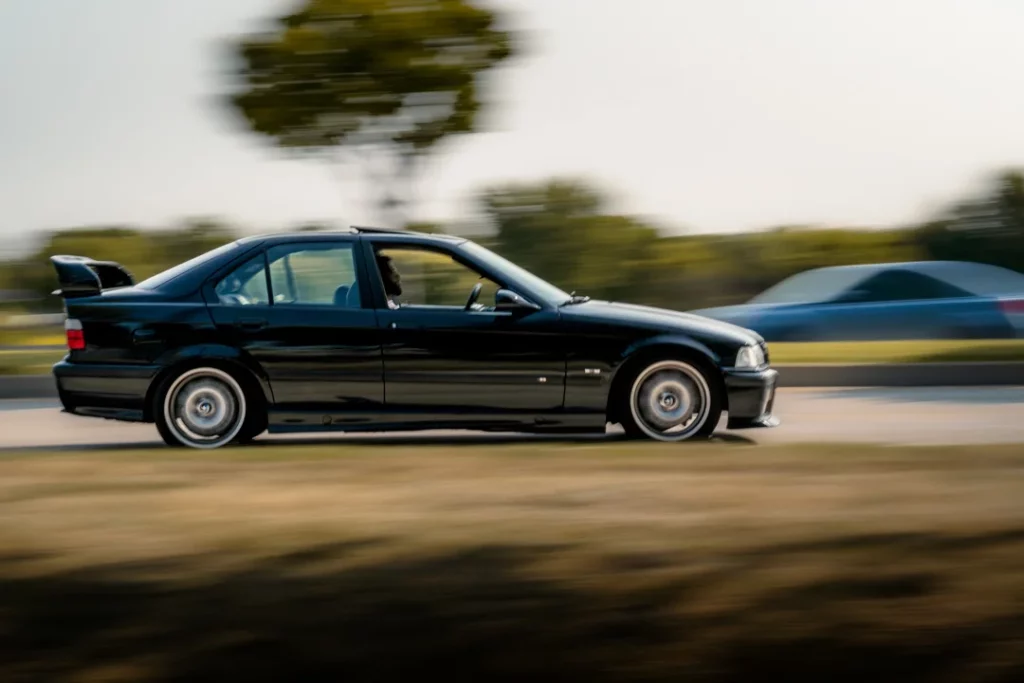
Rough ride
Short, stiff sidewalls of low-profile tires provide a rather rough ride due to less shock absorption. Low-profile tires tend to compromise the vehicle’s ground clearance, which can further affect ride quality on rough roads or obstacles. Sidewalls typically absorb a significant amount of impact from bumps and potholes, but with low-profile tires, there’s less material to cushion the ride, increasing the vehicle’s spring rate.
The spring rate—essentially the vehicle’s ability to stabilize over harsh terrain—depends on three components:
- The tires
- The suspension
- The seat cushion
The tire contributes about 10 times more to the spring rate than the suspension or seat cushion. So, if you switch from a 70-series tire to a 45-series, you’ll notice a rougher ride almost immediately.
When manufacturers offer low-profile tires as an Original Equipment (OE) option, they may also provide a different suspension to better absorb shocks, offsetting the reduced comfort of low-profile tires.
Prone to damage
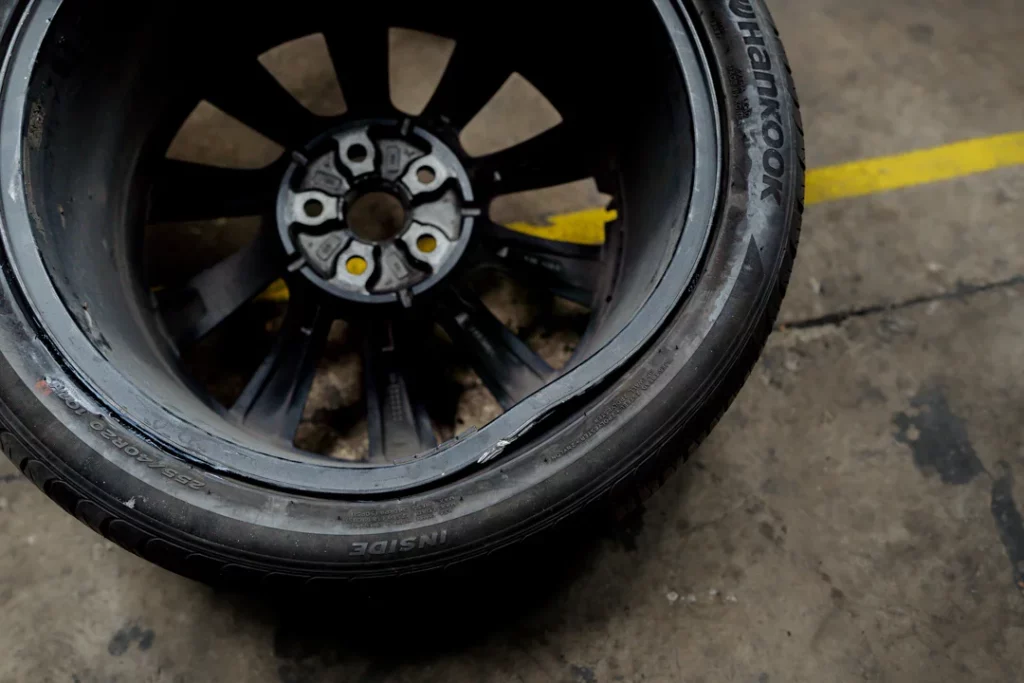
Some tire and vehicle damages to watch out for with low-profile tires:
- Rapid deflation: If the tire isn’t run-flat, a puncture can cause rapid deflation, potentially totaling the tire and creating safety risks. Low-profile tires have shorter sidewalls, so there’s less cushion if air is lost.
- Pinch cut: This damage happens when a vehicle hits a pothole, and the rim cuts through the tire’s sidewall. It’s common on poor roads at high speeds, especially with 35-30 series tires.
- Wheel damage: Hitting an obstacle at high speed can damage the wheel, as low-profile tires have less sidewall to absorb impact. They often come with aluminum rims, which are more prone to bending.
- Suspension strain: Without adjustments to the suspension, it can absorb most of the impact, as low-profile tires don’t effectively cushion the ride. This overload can lead to suspension issues.
- Electronic Stability Program (ESP) issues: Switching from 15” to 20” tires can confuse the ESP system, as the tire’s roll rate changes. This can cause inaccurate readings or unexpected responses from the computer. It is very important to follow the manufacturer’s recommendations for suitable tire and rim sizes—you can find them on a driver’s door sticker or in the car owner’s manual.
While tire manufacturers improve the compounds and designs on newer low-profile tires, they remain vulnerable if underinflated or overloaded. For a smoother ride, some drivers prefer steel wheels and higher-profile tires, which avoid many of the challenges associated with low-profile tires.
Faster wear
Like other performance or sport tires, low-profile tires offer enhanced grip but tend to wear out faster. Sport tires use softer compounds that boost traction, causing the rubber to wear down more quickly and leave residue on the road.
However, the lifespan of low-profile tires can be shortened further depending on the vehicle and driving habits:
- Overloading the vehicle increases pressure on the rubber, causing faster wear.
- Driving at high speeds uphill adds resistance, accelerating wear.
- Hard cornering at high speeds puts extra strain on the rubber, wearing it out faster.
- Braking suddenly without reducing speed first forces the tires to work harder to stop.
In theory, low-profile tires should last as long as any other tire, depending on their size, load index, and speed rating. Manufacturers reinforce the tread and bead to achieve this. Learn more about tire lifespan and when to expect a replacement in this post.
Less grip on irregular surfaces
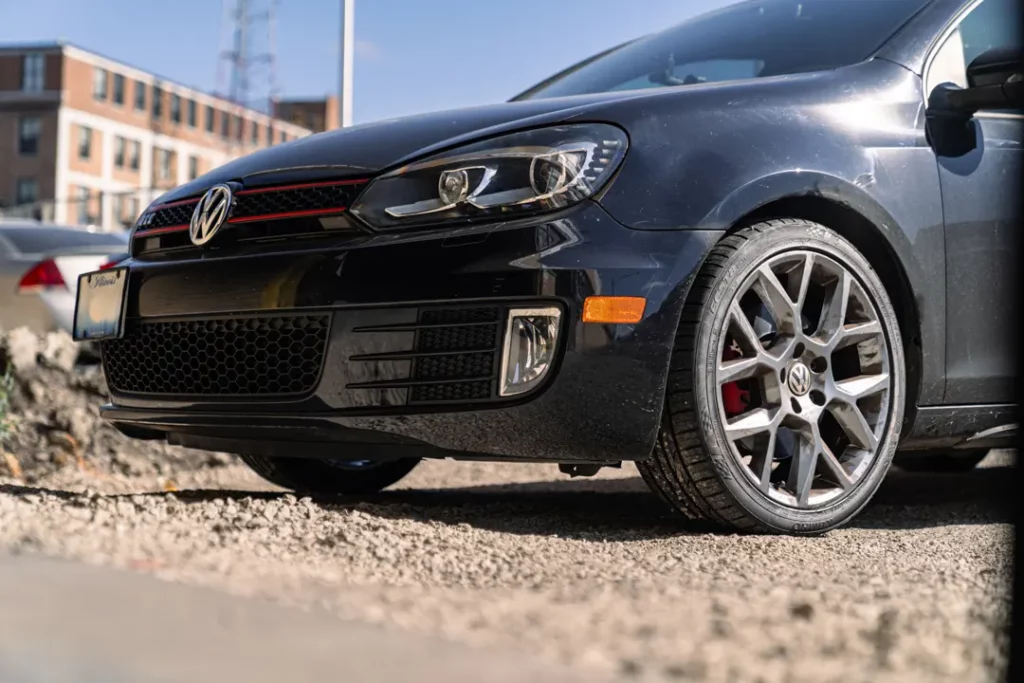
Low-profile tires have a stiff tread, which reduces the contact patch on uneven surfaces, making them unsuitable for off-road conditions. Rough, rocky roads require flexible sidewalls for better traction, something low-profile tires simply don’t provide.
Wet roads may not be a problem if your tires have a directional tread pattern. However, low-profile tires are more likely to hydroplane without this feature as speed increases.
More noise
Low-profile tires are often noisier than standard tires due to their wider contact patch, which increases road noise. Regular tires with higher sidewalls generally produce less noise. The wider a tire is, the more grooves it has, allowing more air to pass through, which amplifies noise. Low-profile tires are typically reinforced for durability, which can further increase noise levels.
The main sound you hear from tires comes from air moving through the tread pattern, with the road surface as a secondary factor. Try driving on fresh asphalt or concrete to get a sense of your tires’ true noise level. Tread vibration and tire pressure also contribute to overall noise.
To reduce tire noise, manufacturers use several design techniques:
- Creating asymmetrical tread patterns of varying sizes so air sounds different across the tire
- Avoiding closed spaces within the tread, particularly for directional tires
- Designing grooves so that inlets and outlets don’t overlap the tread edges.
Should I go low-profile?
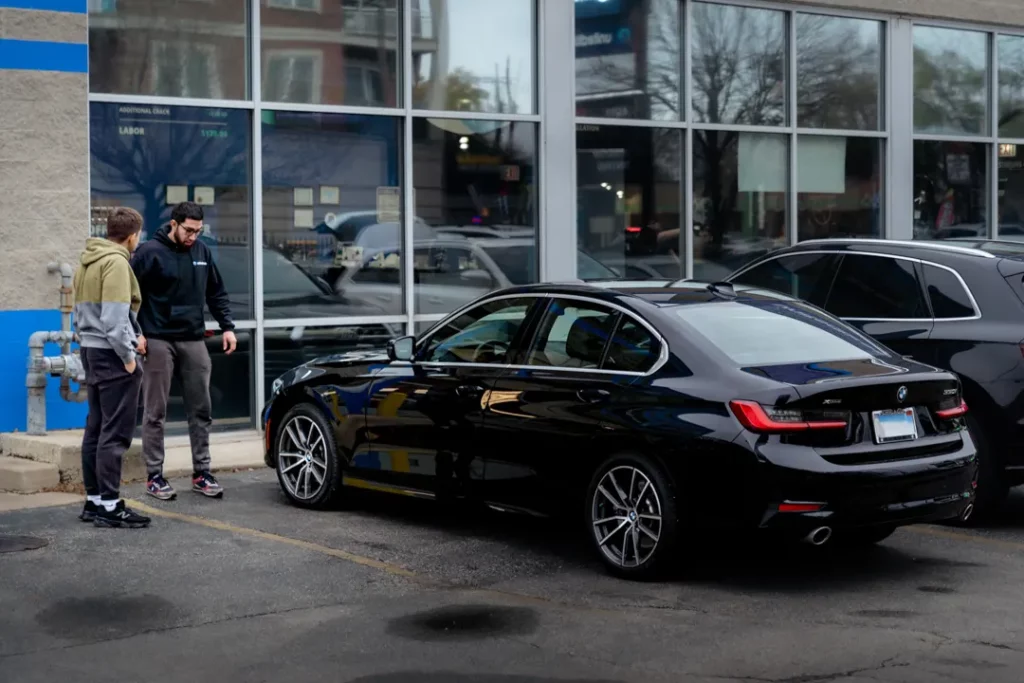
It depends on what you want from your tires: a smooth ride and more practical use or better performance, and a sportier look. Low-profile tires have many advantages and fit those seeking a more responsive, performance-oriented drive. However, they may require upgrading your suspension system, installing larger rims and brakes, and carefully calculating tire sizes. Keep in mind that to maintain sharp responsiveness, you’ll likely need to replace low-profile tires more frequently.
If you’re not ready to make full upgrades to support low-profile tires, it’s best to stick with high-profile options. Choosing low-profile tires just for appearance can lead to issues with vehicle computers and premature wear on the suspension, seat cushions, and other components that aren’t adapted for the change.
However, if you aren’t ready to fully upgrade your car to adapt to the new wheels, stay with high-profile tires. Choosing low-profile tires for appearance can lead to issues with vehicle computers and premature wear on the suspension, seat cushions, and other components that aren’t adapted for the change.
TOP-5 low-profile tire brands
The top manufacturers of low-profile tires today are:
- Pirelli
- Michelin
- Continental AG
- Dunlop Tyres
- Goodyear Tire & Rubber Company.
Pirelli
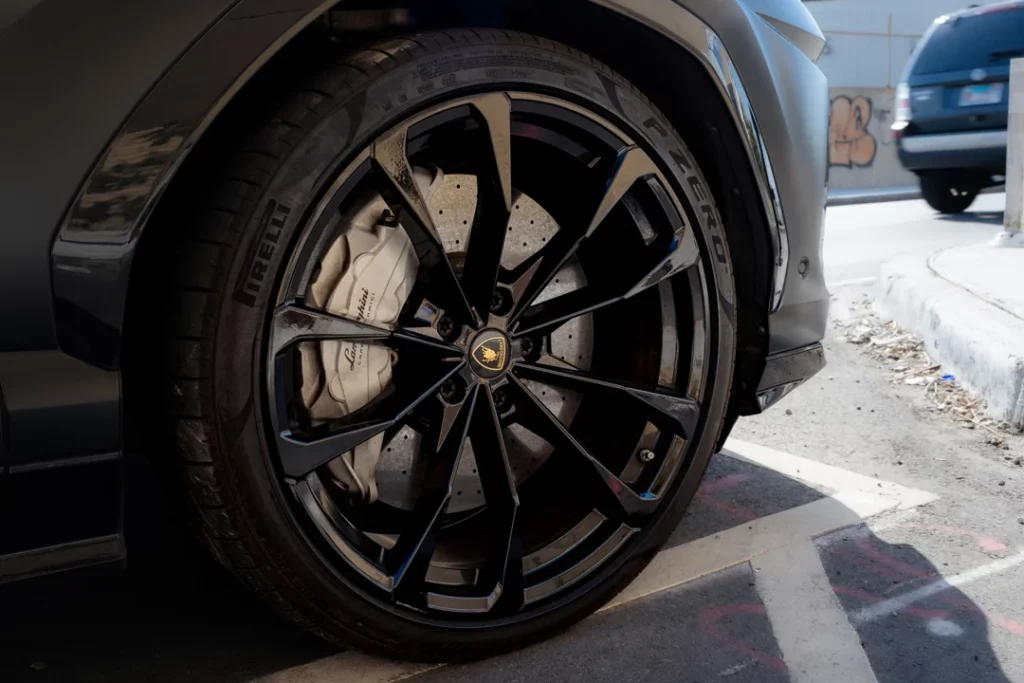
The best lineup of Pirelli’s low-profile Performance tires is P Zero, a max performance summer type.
The tires have carbon black and silica compounds that help them work well even when cold. To combine responsiveness, resistance to hydroplaning, and wet/dry performance, manufacturers have incorporated the S-treme asymmetric tread design. Beneath the tread, a unique compound with nano-composites helps slow casing wear and adds support, improving overall ride comfort.
Michelin
The most famous lineup of Michelin’s low-profile tires is Pilot Sport 4. This is also a max-performance summer tire for those who seek safety and handling at high speeds. These tires offer improved durability, providing a wonderful grip and a long life. As with any summer performance tires, the Pilot Sport lineup isn’t for rides in wintertime.
Thanks to its bi-compound rubber, the Pilot Sport 4 performs well on dry and wet surfaces. This rubber includes a dry compound inspired by Le Mans racing and an advanced wet compound for improved traction in wet conditions. Additionally, the tires are up to 10% lighter than many other models of the same size, which helps increase fuel efficiency.
Continental AG
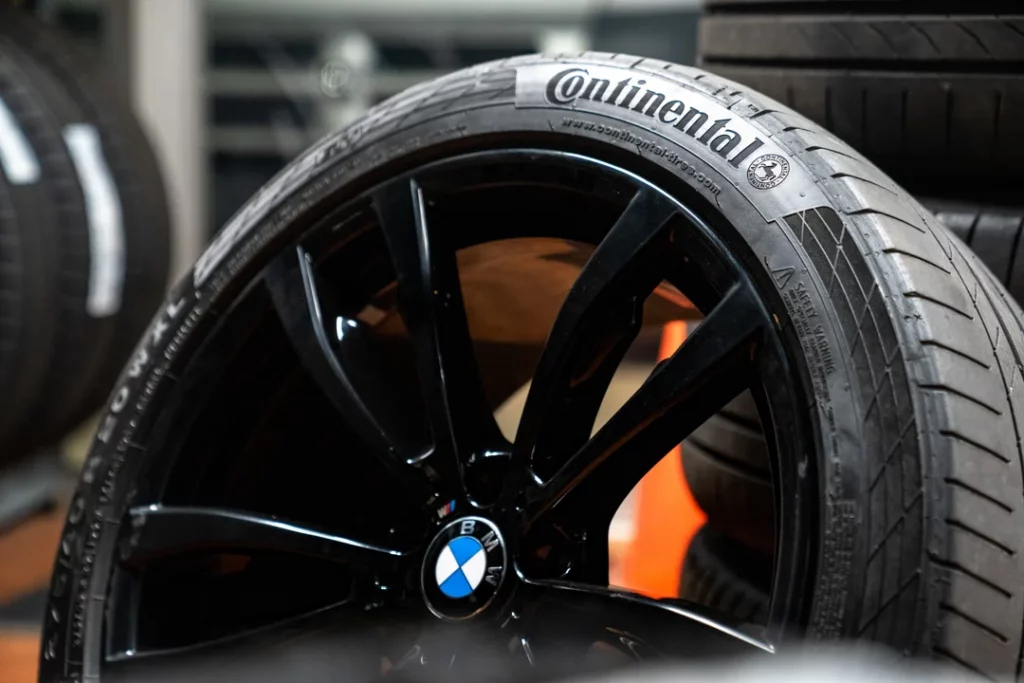
ContiSportContact 5 is currently Continental’s most outstanding low-profile lineup. The tires’ design combines better fuel efficiency, precise cornering, reduced braking distance, and a good lifespan. Like most of Continental’s sporty low-profile tires, these are also summer tires, so there’s no guarantee of good performance in winter.
The tires’ tread blocks are asymmetric with the special macro-block outboard shoulder feature, stabilizing cornering and improving traction. Circumferential grooves help dissipate water, improving wet road performance.
The Black Chilli compound in the rubber has short—and long-chain polymers that help use the heat properly. The first heats up when you push the brakes to reduce braking distance. The second reduces rolling resistance by freeing the energy that the tire absorbs at steady speeds. All these processes improve fuel consumption and keep the tires in better shape as they don’t heat up too much.
Particular sizes of the ContiSportContact lineup also feature ContiSilent Technology, a layer of special foam within the inner liner that absorbs sounds.
Dunlop Tyres
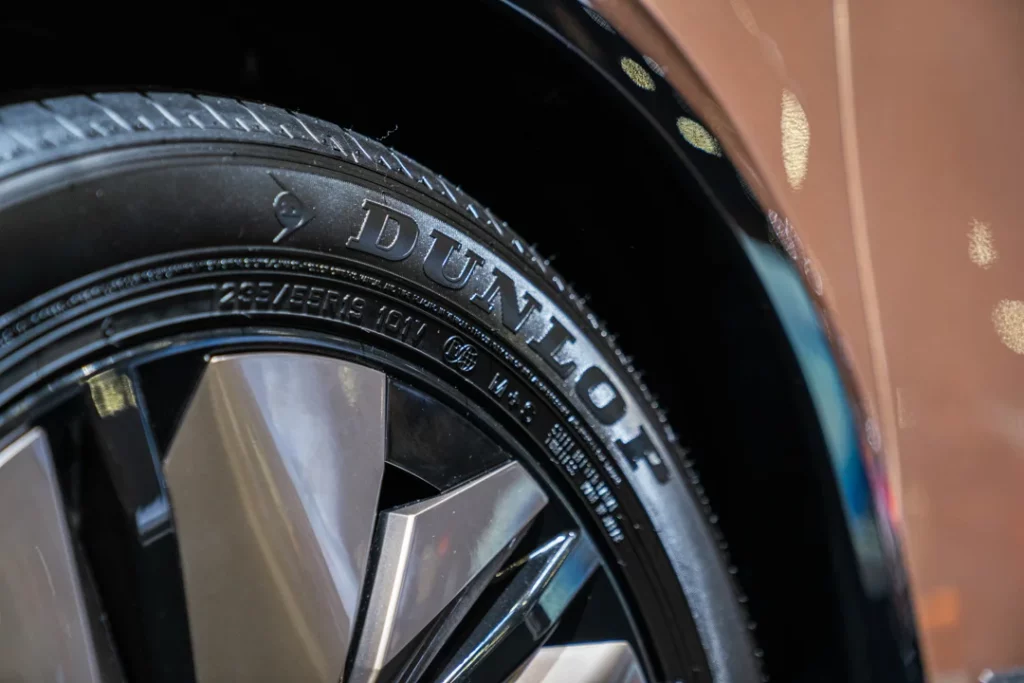
Dunlop’s best low-profile tire lineup option is Sport Maxx. The tires perform great on dry surfaces and are quite reassuring in rainy weather, but they freeze in winter.
Sport Maxxes have large shoulders, special Hydro-Paddle ribs for better wet-road handling, and a stabilizing center rib. The silica and carbon black blend design helps keep most of the tread on the surface, providing a stable grip on different types of roads and at various speeds.
The lineup’s internal structure aims to minimize weight and maximize durability. Two steel belts have a special reinforcement—the so-called Jointless Band (JLB). This is Dunlop’s technology, which uses nylon spirally wrapped around the belts. Such construction reduces tire weight, which means more fuel economy.
Goodyear Tire & Rubber Company
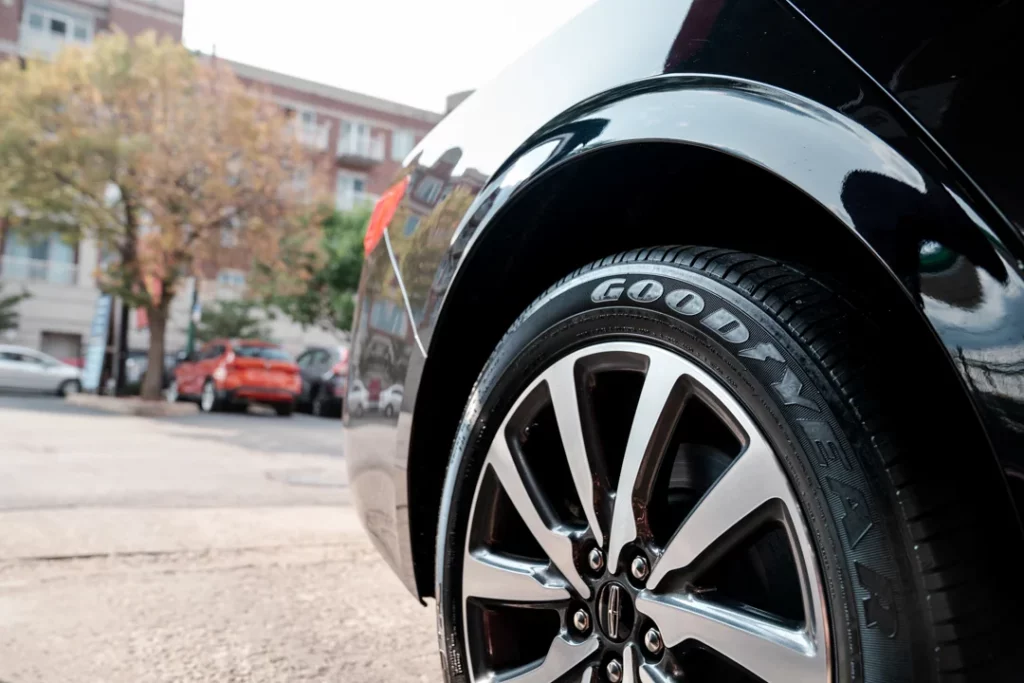
Goodyear has the Eagle Sport All-Season line, which includes some amazing sport low-profile tires with W and V speed rates. The items fit performance-oriented sports cars, sedans, coupes, and even light trucks. The tires aim to provide grip all year long, including dry and wet roads and light snow.
These Goodyear’s tires feature the newest compound that provides all-season traction. The design features large tread blocks with asymmetric grooves that dissipate water and keep the rubber on the ground. It also includes grips that go full-depth and bite into snow, guaranteeing grip even as the tire wears.
4 fun facts on low-profile tires
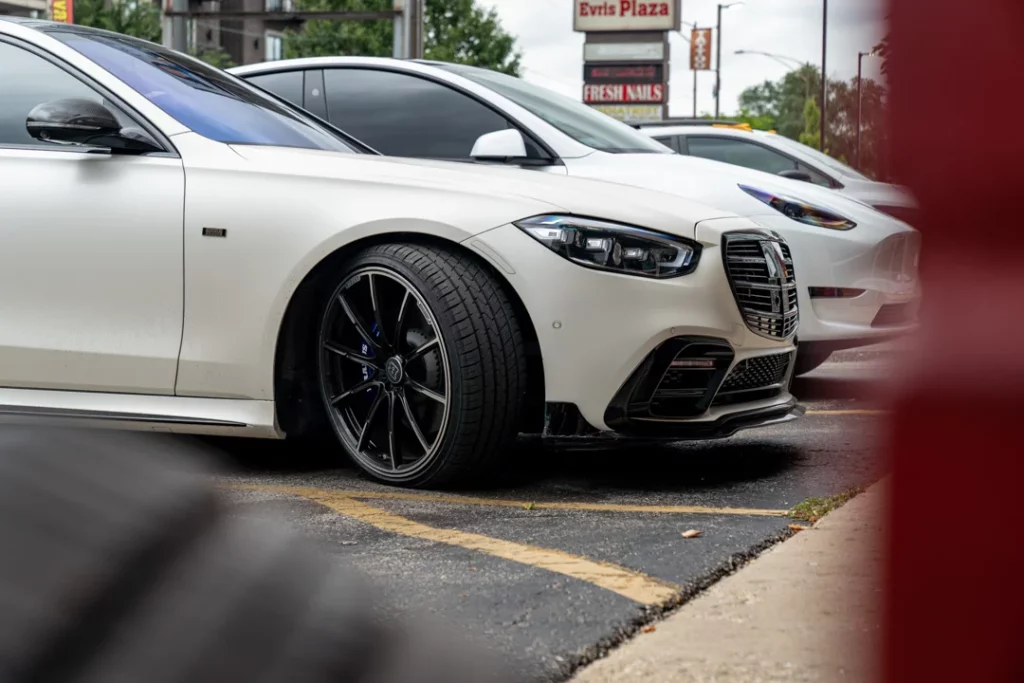
- The lowest available tires are Kumho’s 385/15 series for luxurious cars like Dodge Viper, Ferrari F430, Corvette Z06, etc. They go along with Nexen 365/15, which the company also showed during SEMA. The tires are more for track than for everyday street or highway use.
- In the 1920s, almost all tires had a 98% aspect ratio, dropping to 70% in the 1960s/1970s. The 1970s became a new era in tire profile diversity, introducing 65-55% of tires to the market. Since then, 65% have become more standard, and now 55% have become more regular rather than low-profile.
- Tire width also matters in low-profile tires, as 225/50 and 205/55 will have almost the same height (varying by 0.25 mm). Many drivers pay attention only to the aspect ratio, often choosing the wrong size. Some also pay more for a particular profile, while cheaper tires may have the same height.
- Some manufacturers recommend about 0.2 bar higher pressure for the low-profile tires that are OE for a particular vehicle. This isn’t a rule, but more air will handle the car’s load better. However, over-inflation reduces ride comfort, and under-inflation may cause irreparable damage and overheating.
Frequently Asked Questions
What are low-profile tires?
Lower-profile tires have shorter sidewall heights than regular tires, which gives them a sporty look and good handling. They are used for sports and performance cars.
What are the benefits of low-pros?
These tires offer better handling, cornering, and responsive feel, and sports car drivers prefer them due to their high-performance characteristics.
Do these tires affect ride comfort?
Yes. They give a bumpy ride because they have less cushioning, making them more sensitive to road imperfections.
Do low-pro tires wear out faster?
Yes, especially if they aren’t properly aligned. These tires handle higher speeds and high-performance conditions.
Can I install low-pros on any car?
Not really. Some cars will need suspension modifications for a proper low-profile tire installation.
Are they good for winter driving?
No. We don’t recommend using them in winter due to bad traction on snowy or icy roads.
Share the Knowledge
